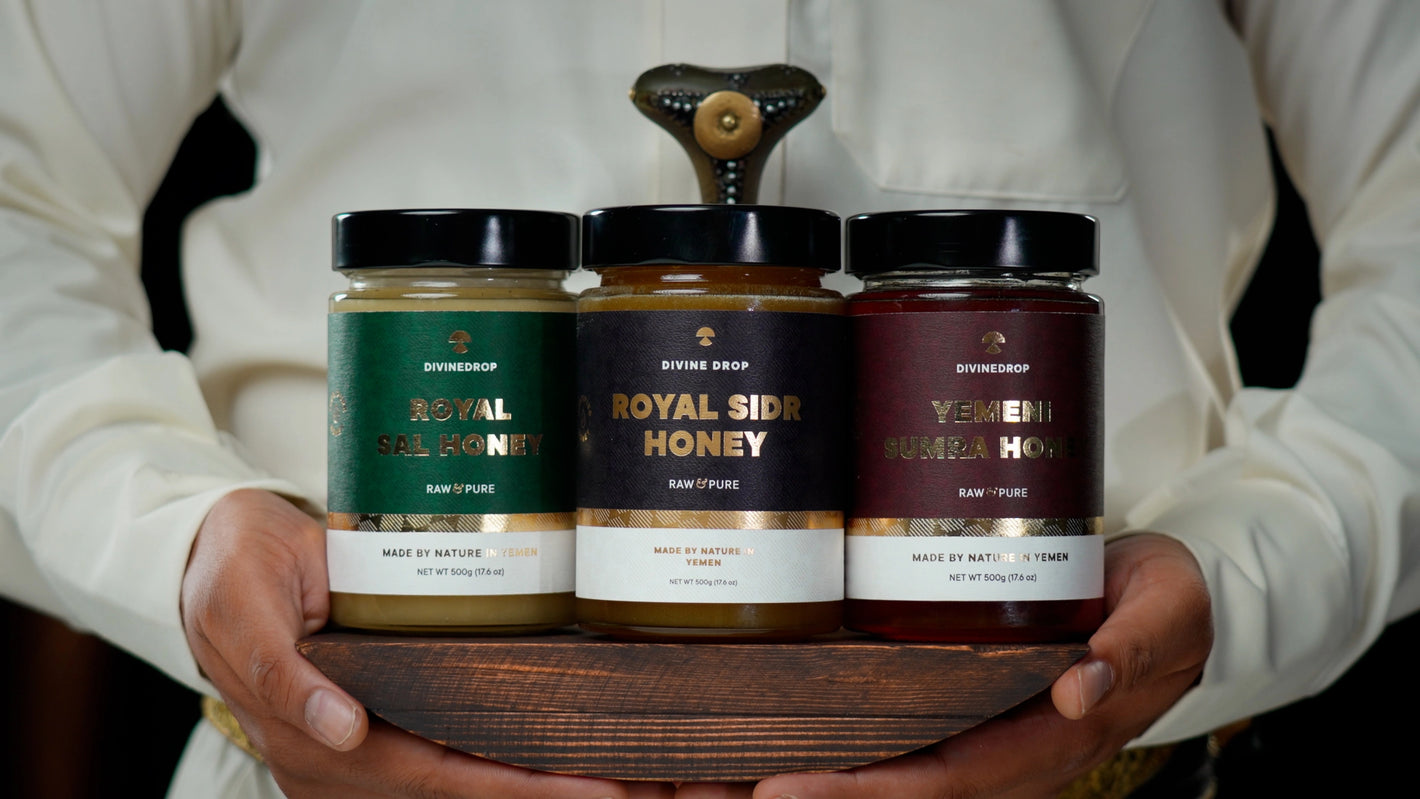





DivineDrop Yemeni Sidr Honey Lab Test Results – Verified by Analytica Laboratories
Our Yemeni Sidr Honey has been lab-tested and verified by Analytica Laboratories, a leading food testing facility in New Zealand. The results confirm an exceptionally high Total Activity (TA) of 32.4, placing it among the most premium and medicinal Yemeni Sidr honeys available and one of the finest honeys in the world.
Certified Lab Test Results

-
Total Activity (TA): 32.4 – Higher than most Sidr honeys available
-
Lab Reference ID: 23-01666
-
Testing Date: February 7, 2023
-
Tested by: Analytica Laboratories, New Zealand
-
Testing Method: University of Waikato agar well diffusion test
-
Sample ID: Sidr2
Why Does Total Activity (TA) Matter?
The Total Activity (TA) test measures the natural bioactivity, purity, and potency of honey. The higher the TA, the more active and premium the honey is.
-
TA 32.4 is comparable to high-grade Manuka honey (MGO 1800+), placing it among the most potent medicinal honey worldwide.
-
Ensures high natural purity and long-lasting freshness.
-
Indicates exceptional honey quality, making it highly sought-after.
What Makes DivineDrop Yemeni Sidr Honey Special?
-
100% Raw, Organic, and Unpasteurized – Retains its natural enzymes, nutrients, and authentic floral flavor.
-
Sourced directly from our beekeeper in Wadi Doa’n, Hadramout, Yemen – A region renowned for premium Sidr honey, where our beekeeper has gained generational expertise.
-
Harvested in Peak Season (October) – “Sidr Baghyah” – Collected during the 40-day autumn harvest, ensuring maximum potency and quality.
-
Cold-Extracted & Sustainably Sourced – Hand-harvested by expert nomadic beekeepers, using environmentally friendly and ethical beekeeping practices.
-
Pre-Ordered for Maximum Freshness – Our Sidr honey is reserved directly from the season, ensuring it reaches you at peak freshness.
-
Tested & Verified by Third-Party Labs – Certified authentic, pure, and high in bioactivity by Analytica Laboratories.
How Does DivineDrop Yemeni Sidr Honey Compare?
-
With a TA of 32.4, this honey exceeds the potency of many other honeys, including high-grade Manuka honey.
-
Recognized as one of the strongest and rarest Sidr honeys available, making it the preferred choice for honey enthusiasts and connoisseurs.
-
Premium, unadulterated quality – No additives, no processing, just pure, raw Yemeni Sidr honey straight from the source.
Why Choose DivineDrop?
When you buy DivineDrop Yemeni Sidr Honey, you're choosing a brand with years of expertise, ethical sourcing, and a commitment to quality and customer satisfaction. Here's why our honey stands out:
-
Expertise & Experience – With a deep-rooted knowledge of Yemeni honey traditions, we work directly with beekeepers who have practiced their craft for generations.
-
Authenticity & Transparency – Lab-tested, verified, and sourced directly from Yemen’s most skilled beekeepers in Wadi Doa’n.
-
Superior Quality & Freshness – 100% raw, organic, unpasteurized, and harvested only in the peak season to ensure unmatched potency and taste.
-
Sustainable & Ethical Sourcing – We support local Yemeni beekeepers and ensure environmentally friendly, traditional beekeeping practices.
-
Dedicated Customer Service – We prioritize customer satisfaction, providing expert support and ensuring every jar meets our premium quality standards.
When you buy DivineDrop Yemeni Sidr Honey, you’re not just getting honey – you’re getting:
-
Authenticity & Transparency – Lab-tested, verified, and sourced directly from Yemen’s top beekeepers.
-
Unmatched Purity – No blending, no sugar feeding, just wild, naturally sourced honey.
-
A True Taste of Tradition – Supporting local Yemeni communities while preserving traditional beekeeping methods.
👉 Shop Now and Taste the World's Finest Yemeni Sidr Honey – Pure, Potent, and Lab-Tested for Exceptional Quality!
Why DivineDrop Honey?
FAQ
DivineDrop Sidr Honey
1. What is Yemeni Sidr Honey?
Yemeni Sidr Honey is a rare and premium honey made by bees that feed exclusively on nectar from the Sidr tree. It’s known for its smooth, rich taste and therapeutic properties. This honey is raw, organic, and unpasteurized, retaining all its natural nutrients.
2. Why is Yemeni Sidr Honey so expensive?
Yemeni Sidr Honey is rare and highly sought after due to its exceptional quality and health benefits. It’s harvested in limited quantities, sourced directly from Yemeni beekeepers, and tested for its purity and potency. The cost also reflects shipping, customs, and processing for international customers.
3. What are the health benefits of Yemeni Sidr Honey?
Yemeni Sidr Honey is known for:
- Boosting immunity
- Supporting digestive health
- Helping with respiratory issues and sore throats
- Promoting wound healing
- Providing energy and overall well-being
Its high therapeutic value makes it suitable for medicinal use.
4. Is Yemeni Sidr Honey good for sore throats?
Yes, Yemeni Sidr Honey is excellent for soothing sore throats. Its natural antibacterial and anti-inflammatory properties help reduce pain and irritation while promoting healing.
5. How is Yemeni Sidr Honey different from Manuka honey?
While both are premium therapeutic honeys, Yemeni Sidr Honey has a TA rating of 25-32, equivalent to MGO 1500-1800 in Manuka honey. Sidr Honey is monofloral, collected from Sidr trees, offering a rich, smooth taste and unique benefits.
6. How should I consume Yemeni Sidr Honey?
You can take Yemeni Sidr Honey:
- Directly by the spoonful (1-2 teaspoons a day)
- Mixed with warm water or tea
- As a natural sweetener in recipes
Consume in moderation for maximum health benefits.
7. Is Yemeni Sidr Honey good for diabetes?
Honey should be consumed cautiously by individuals with diabetes. While Yemeni Sidr Honey is natural, always consult a healthcare professional before use.
8. Is Yemeni Sidr Honey raw and organic?
Yes, our Yemeni Sidr Honey is raw, organic, and unpasteurized. It’s harvested directly from Yemeni beekeepers, ensuring purity and authenticity.









